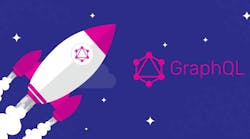When it comes to delivering data to clients, server applications increasingly prefer GraphQL. Whether you’re using a mobile device or a browser, GraphQL seems to remain thoroughly objective, driven by the fact that it only supplies the data that’s requested and nothing else. This database language helps do away with the trouble of stitching together data from a variety of sources. By merely putting down requests for irrelevant and additional data, it makes the process smoother and more efficient.
Obviously, such a precision-driven database mechanism requires dealing with data from a variety of sources, such as the backend services at home, third-party APIs, and the existing databases. This involves a lot of resources, and together they can take a toll on the server. Consequently, app developers need to think about optimizing the CPU capacity to the maximum.
This is where Rust, a high-performance language like C, can play a vital role. Some of the key qualities that made Rust an automatic choice for GraphQL server-side development include easy coding, the safety of memory in case of concurrent data handling, and expressive code.
Before we go into explaining the development of GraphQL with Rust, let’s start with the basics.
What are GraphQL and Rust?
GraphQL is a data query language built by Facebook for serving the performance-savvy front end of mobile and web apps. Rust is a tremendously fast-paced language that ensures optimum code safety to allow for easy and convenient declaration and resolution of GraphQL schemas.
What Makes Rust So Suitable for GraphQL Development?
Rust is a low-level language with minimal coding complexities and a rich type method. It also offers optimum memory utilization without the need for garbage collection. Furthermore, Rust is loaded with a robust library to write code for fast-paced servers. Rust serves an excellent language option to fit GraphQL server needs. For more than a year, developers worldwide been turning to Rust as the language to build server-side software.
In terms of its attributes, do all of Rust’s data structures fit well for the data structures of GraphQL? Rust comes with a robust, safe, and fully static code type system. This further ensures optimum safety for GraphQL server-side apps. With a type system like this, developers can accomplish lots of work within just the compilation time. Furthermore, because Rust is a low-level language, it allows for many simple abstractions.
By using a language with strong code typing ability, the developers enjoy the optimum type of safety for all of their GraphQL implementations. The language offers some larger procedures that also minimize the need for a lot of boilerplate code for the app to establish a connection with the server. If the developers take care of the Rust implementation, it can ensure optimum development speed and ease.
Though Rust allows you to handle data structure with high precision, you may want to use a separate data structure for different types of requirements. In such cases, Rust allows for the use of custom data structures. By simply specifying custom types, and by using the nearby types with a variety of traits, you can customize the data structure. Though using custom data structures is a bit more complex, for common data types, Rust is fully equipped to handle your needs.
What Lies Ahead?
Currently, most developers trying to build server-side GraphQL applications are pretty satisfied with Rust. But many experts still believe that various shortcomings need to be answered. To get more out of Rust in GraphQL server-side development, it’s important to take an active and hard look at the key limitations to get an idea of what needs to be done with the Rust implementation:
Nathan McKinley is Business Development Manager at Cerdonis Technologies LLC.
